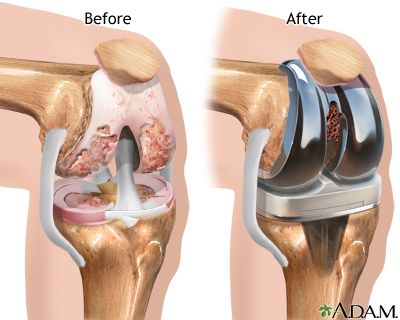
Usually, when it comes to hip joint replacement surgery, most people expect an elderly orthopedic surgeon to be on the operating table, a person who has gone through a life of complete excessive wear and tear on the joints. Justified is a 60-70 years old who unfortunately did not avoid hip osteoarthritis. Well, the reality is quite different. Femoral head necrosis or congenital hip dislocation (dysplasia) can be a health problem encountered by young people aged 20 to 50 years. Dr Ali Holistic provide the best joint replacement treatment in USA.
If these conditions make their presence felt at an early age, or there are apparent symptoms that can be identified as being directly responsible for the onset of hip osteoarthritis, you should not panic.
High-performance implants
Medical technology has advanced far enough today to ensure an everyday life for young people who opt for a hip prosthesis. Hip prostheses are made of high-quality materials that provide a more than satisfactory quality of life. We are talking about implants that are very resistant to wear and tear and can last for 25-30 years without any problems. See also types of hip prostheses.
After this time, you will most likely need surgery to revise your hip prosthesis, and life goes on. Unfortunately, many young patients still prefer to struggle with pain relievers if the disease sets in instead of opting for a hip prosthesis, which, as I said above, can bring to the fore. A typical standard of living. No one should endure pain as long as there are medical solutions that can eliminate them, not just alleviate them or make them disappear for a particular time.
I put on hip prostheses for patients of very different ages; the youngest was 25 years old and the oldest 90 years old, all of them managing to get rid of the pain and continue their life without any problems. So, although there is no optimal age for the hip prosthesis from a medical point of view, this intervention is recommended regardless of age as long as we deal with diseases that lead to hip osteoarthritis or femoral head necrosis itself.
Life After Hip Joint Replacement
In terms of physical activity after hip replacement, life goes on. You can practice low-impact exercises, such as swimming, water aerobics, dancing, cycling, so that you can stay fit and active without putting extra stress on your prosthetic hip. Some patients are even allowed to ski.
You will need to avoid sports that put a lot of pressure on your joints (such as tennis and badminton), contact sports (such as football), jumping, or jogging. This takes a few months of recovery after the joint replacement operation (as after any other type of surgery). However, each patient can still enjoy their favourite sports, with a few exceptions.
International Statistics
There is also a worldwide increase in the number of patients opting for hip prostheses. According to data published by the National Hospital Discharge Survey, in the United States, in the 2000s, 138,000 hip prostheses were placed / year. Ten years later, in 2010, the number of patients suffering from hip osteoarthritis who opted for hip prosthesis reached 310,000 / year (Let's not forget that osteoarthritis affects over 27 million people). The aged sector with the most significant increase in hip joint replacement is not +70 years as everyone expects, but 45-57 years (+ 200%)
We are talking about people in the full force who choose to end pain and drug treatments who are no longer able to maintain the standard of living in normal parameters and who understand very well that a hip prosthesis completely REMOVES pain and restores mobility, allowing in the same time for patients to enjoy their favourite activities.
No more pain, no more medication.
Now, it is up to you to decide whether or not it is worth bothering with hip osteoarthritis or hip dysplasia, as long as there are hip prostheses. The pain that occurs when the bone rubs against another bone will increase as time passes and the disease progresses. Mobility will also start to disappear, and moving away from sports activities will be a certainty. Dr Ali Holistic provide the best Musculoskeletal disorder Shock wave therapy in USA.
On the other hand, the hip prosthesis is a safe operation that does not last more than two hours the next day, and you can mobilize with minimal pain. Furthermore, with the replacement of the hip joint, most of the time, the lower limbs are equalized if there was an inequality of them preoperatively. Therefore, the daily activity can be resumed with a few exceptions. After a few months (usually two months) after the intervention, the physical activities can also be continued without any worries.